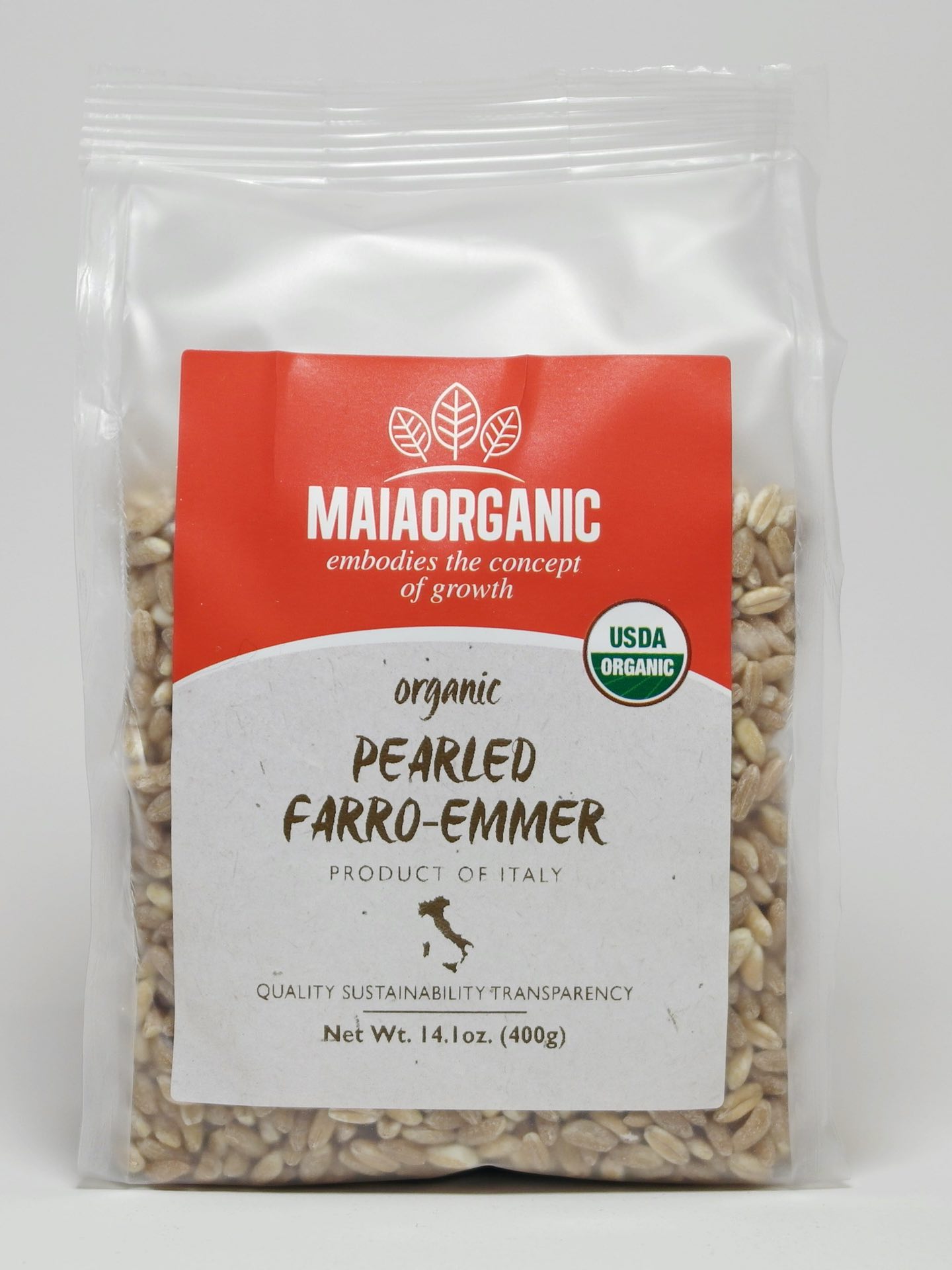Farro, used for thousands of years in North Africa and the Middle East, is the common name given to several species of the genus Triticum. The first Triticum species to be cultivated was T. Monococcum; its Latin name derives from the fact that its spikelet has very low fertility, producing no more than one grain. Following spontaneous crossings between T. Monococcum and other wild species a new variety arose: T. Dicoccum, whose spikelet contained two kernels. This newer offspring proved to be more productive, and it has been the dominant grain in the Mediterranean region for centuries until was replaced by the common T. durum wheat we use today for pasta.
Currently, Triticum Dicoccum is the most widespread in Italy. Thanks to its rusticity and tolerance to pests and climatic excesses, it can be cultivated up to 1000 meters above sea level. Due to these aspects and its nutritional value, taste also in addition with the historical and cultural significance; the market has recently taken a devoted interest in this “re-discovered” grain.
Farro is rich in B vitamins, fiber and mineral salts, yet has a very low-fat content. An interesting feature is its antioxidant power, due to the high content of selenium and phytic acid. These two elements inhibit the formation of free radicals, which are responsible for various degenerative diseases. These grains absorb a significant amount of water while cooking – almost 2.5 times its own weight – resulting in a high satiety index, so they are recommended for low-calorie diets. Farro is also excellent for people with cholesterol problems and diabetes as, thanks to a balanced dose of complex carbohydrates and dietary fiber, the simple sugars are slowly absorbed in the intestine.
Farro is also known as “dressed grains” because the glumes and the husk envelop its caryopsis, for which reason, grains require an additional “hulling” process through which seeds are then separated from the chaff. To make it more digestible and easier to cook, our Pearled Farro is further processed also remove the outer part of the kernel.

* Chefs Tips *
Pearled emmer
45 minutes of cooking
pre-soaking not required
*Before using Farro rinse it thoroughly under running water and remove any debris that you may find
*Find the perfect texture by tasting your Farro while cooking
*Feeling lazy? Just fill half avocado with plain boiled Farro, a teaspoon of Salt, Black Pepper & Goat Cheese
*Treat yourself and stay healthy by having a fresh Farro with Almonds & Pomegranate
*Need some comfort food to warm your dinner up? Try a creamy Farro & Wild Mushroom Risotto with Mascarpone & Grana Padano cheeses
*Go 100% green and prepare a spicy Farro & Red Lentil Burger with Balsamic Sriracha Sauce combined with grilled zucchini or any other vegetable of your choice
*Longing for exotic aromas? Have a Vegan Farro Chilli or some Farro + Dates & Caramelized Fennels
*Never forget a drizzle of Extra-Virgin Olive Oil
*Still hungry? Have more here!

